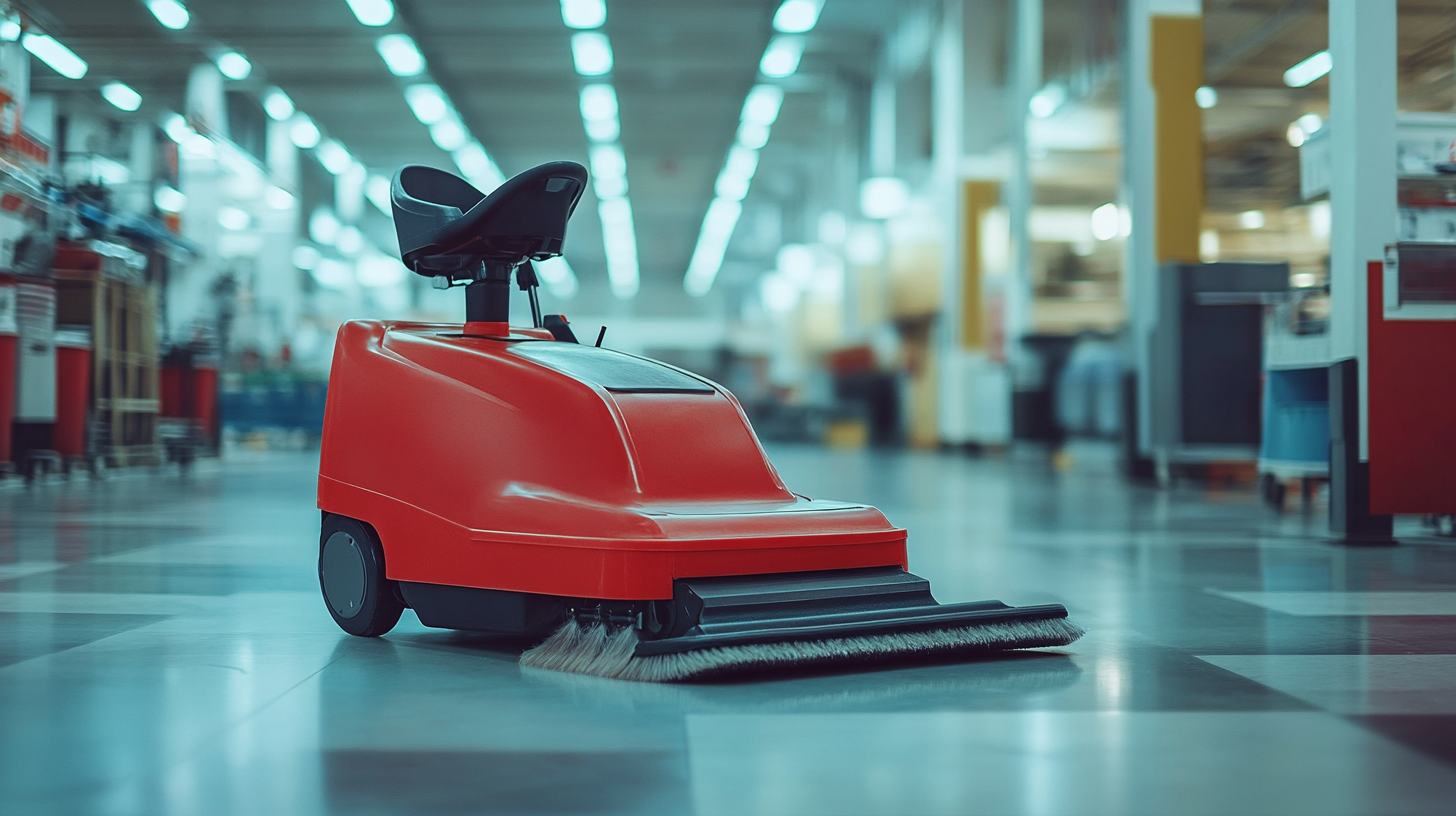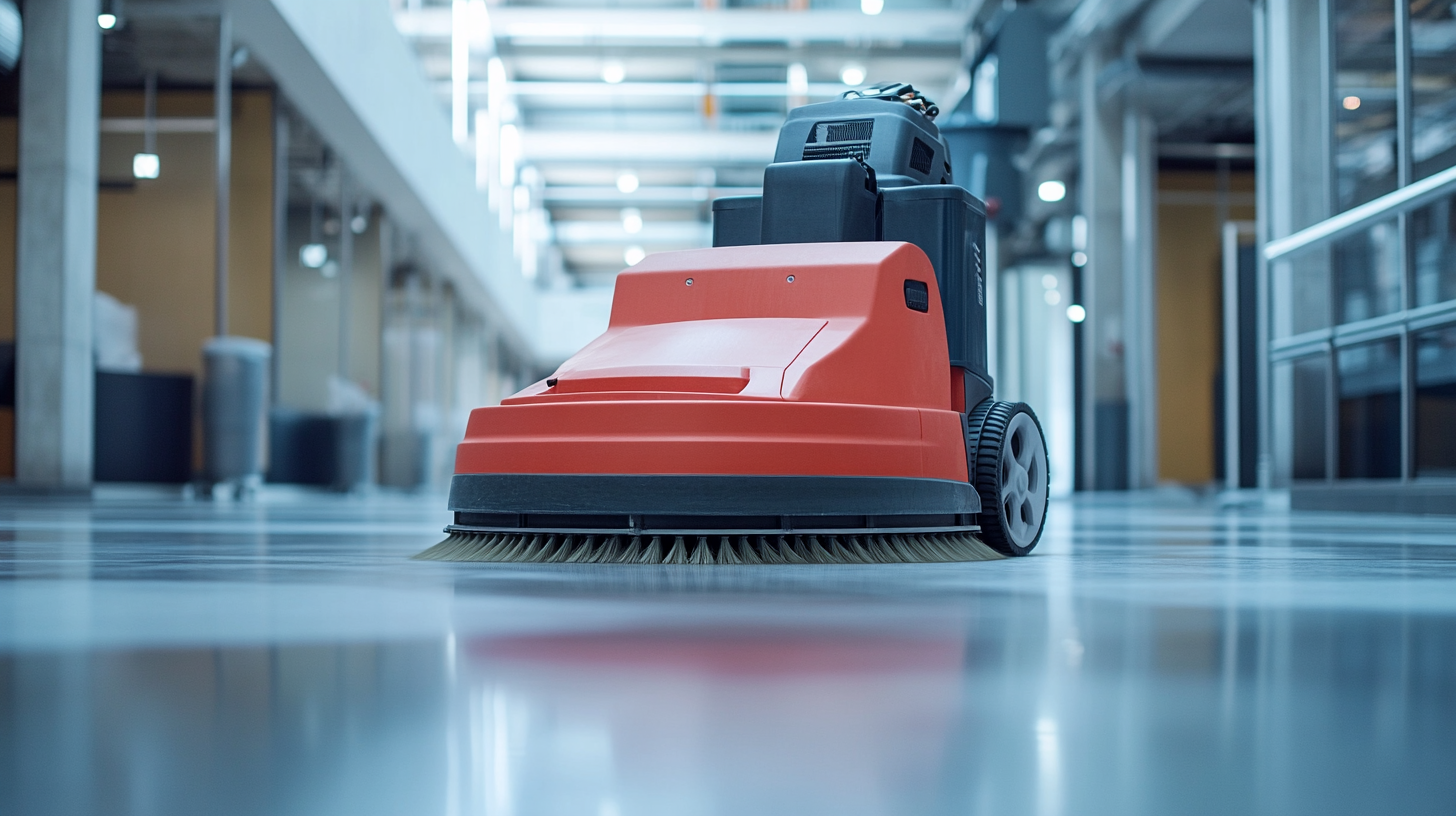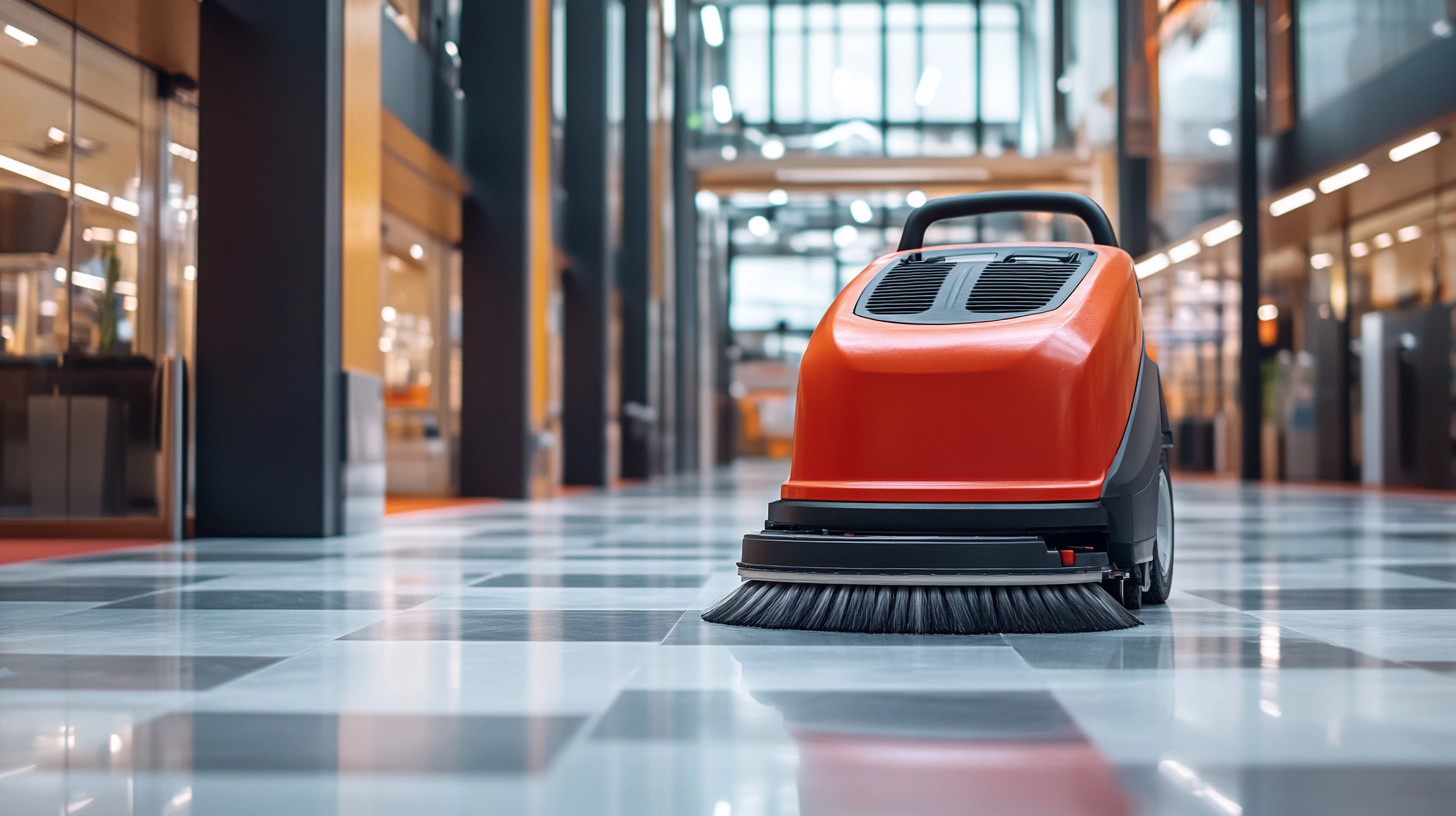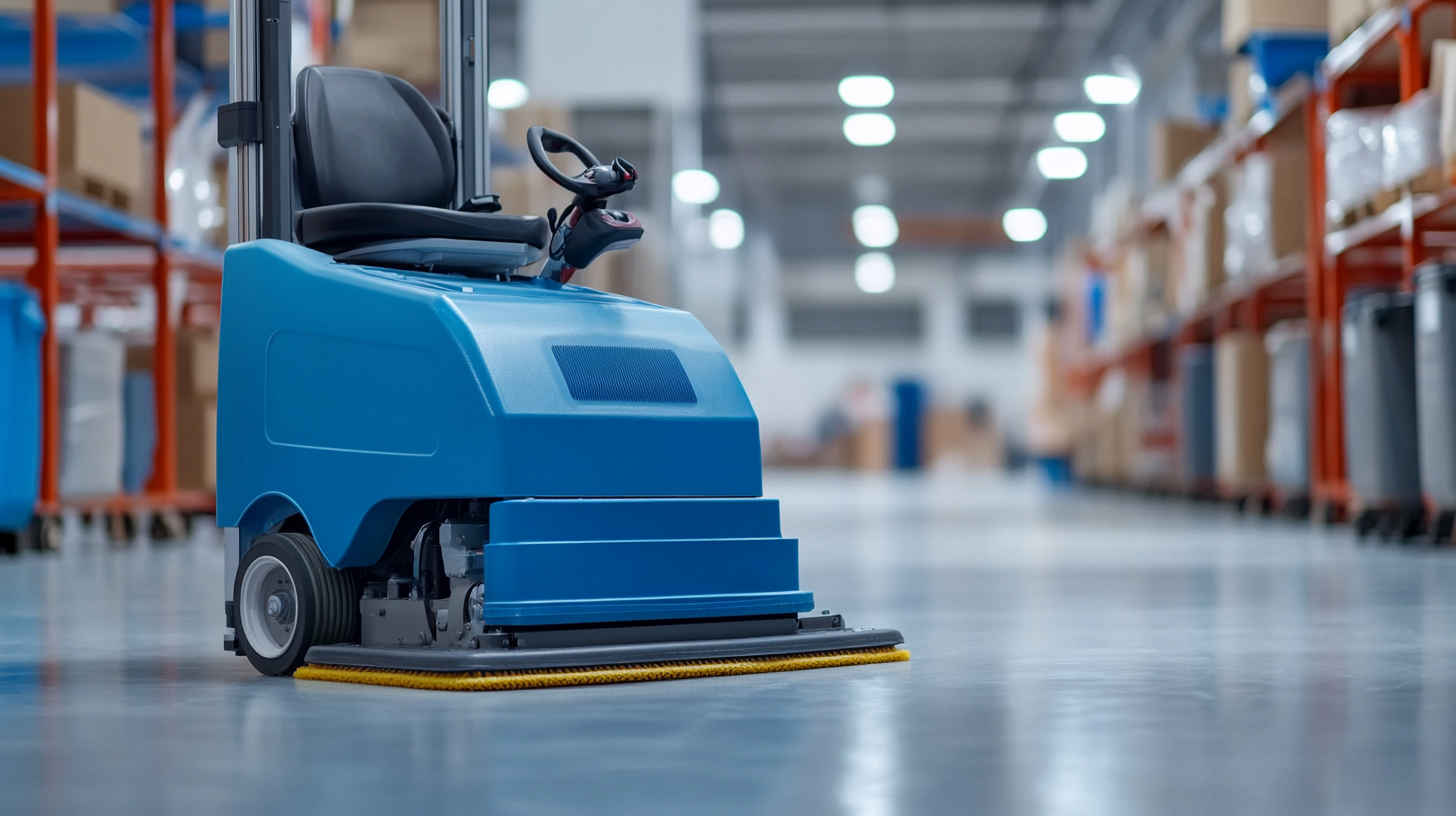Leave Your Message
In the commercial cleaning industry, the efficiency and effectiveness of maintenance equipment play a crucial role in operational success. According to the American Cleaning Institute, businesses that invest in high-quality cleaning machines, such as floor scrubber machines, can enhance productivity by up to 30%. As companies strive to maintain cleaner and more sanitary environments, particularly in light of recent health concerns, the demand for reliable and efficient floor scrubber machines has surged. Businesses across various sectors—from retail to hospitality—now face the challenge of choosing the right model to meet their specific needs.
Selecting the appropriate floor scrubber machine involves considering factors like surface type, frequency of use, and overall budget. Market research conducted by Freedonia Group indicates a projected annual growth of 5.2% in the global floor cleaning machine market, underscoring the importance of making informed purchasing decisions. As organizations seek to balance cost-effectiveness with operational demands, understanding the diverse range of floor scrubber machines available will enable them to enhance their cleaning protocols and ensure a healthier environment for staff and customers alike.

When considering the right floor scrubber machine for diverse business environments, it's essential to understand the different types available on the market. Each type of floor scrubber is designed to meet specific cleaning needs, varying in size, power, and functionality. For instance, ride-on scrubbers offer a high-efficiency solution for large spaces such as warehouses and shopping malls, allowing operators to clean extensive areas quickly. On the other hand, compact walk-behind models are ideal for smaller venues like restaurants and retail stores, where maneuverability and ease of use are crucial. Moreover, the emergence of robotic floor scrubbers is revolutionizing the cleaning industry. These innovative machines not only enhance efficiency through automation but also reduce labor costs. With a projected market growth that highlights their increasing adoption, businesses can benefit from investing in robotic solutions that optimize cleaning routines while maintaining high standards of hygiene. Understanding the specific requirements of your business environment will guide you to the right choice, ensuring that you leverage the latest technology for effective floor maintenance.

When selecting a floor scrubber machine, it’s essential to focus on key features that ensure optimal performance tailored to your business needs. One of the foremost attributes to consider is the machine’s type—automatic or manual. Automatic floor scrubbers are ideal for larger spaces requiring efficiency and speed, while manual options may suit smaller, confined areas where maneuverability is crucial. Understanding the layout and dimensions of your workspace can help determine the most appropriate model.
Another critical feature to evaluate is the scrubber's tank capacity. A larger tank size can minimize downtime for refills in extensive cleaning operations, enhancing productivity. However, for smaller facilities, a compact model with a smaller tank might be more manageable and easier to store. Additionally, consider the cleaning width; a broader scrub path can cut down on cleaning times, but ensure it aligns with accessibility in tighter spots.
Battery life and charging time should also be prioritized. A floor scrubber machine with long-lasting battery performance will allow for extended cleaning periods without interruption, critical in high-traffic environments. Furthermore, ease of maintenance is vital; choose machines designed for quick access to parts, making routine upkeep simpler. By focusing on these essential features, businesses can select a floor scrubber that meets their unique requirements while enhancing overall operational efficiency.

When it comes to purchasing a floor scrubber machine, the decision often boils down to the balance between cost and value. Businesses must consider not only the purchase price of the machine but also the long-term benefits it brings to their operations. A cheaper model may seem appealing at first, but if it lacks efficiency or durability, it could end up costing more in repairs and replacements down the line. Thus, it's essential to evaluate the total cost of ownership rather than just the upfront cost.
One key aspect to consider is the machine’s performance in relation to your specific cleaning needs. Investing in a higher-quality floor scrubber that offers advanced features such as automated cleaning functions and eco-friendly operation can greatly enhance productivity and reduce labor costs. In many cases, these machines not only clean better but are also more reliable, resulting in less downtime and maintenance. Therefore, while the initial investment might be higher, the value gained can translate into significant savings and improved cleanliness in the long run.
Businesses should also weigh the potential impact on employee satisfaction and health. A clean work environment contributes to employee morale and can reduce the risk of accidents and illnesses. This factor, often overlooked in calculations, adds immeasurable value to choosing a quality floor scrubber. By taking into account both the immediate costs and the broader implications for operational efficiency and workplace health, businesses can make a more informed decision that aligns with their long-term goals.

When it comes to maintaining the lifespan of your floor scrubber machine, proactive care is crucial. According to a report by the Cleaning Industry Research Institute, regular maintenance can extend a scrubber's life by up to 50%, significantly reducing long-term operational costs. One of the most effective ways to ensure the longevity of your scrubber is through daily inspections. This includes checking brushes, pads, and squeegees for wear and tear, which can impact performance if left unchecked.
In addition to daily inspections, proper cleaning and storage are essential. Keeping your floor scrubber clean from dirt and debris prevents unnecessary wear on components. The International Institute of Cleaning and Restoration Certification suggests that operators should clean out solution and recovery tanks after every use to avoid corrosion and buildup. Furthermore, storing the machine in a dry, climate-controlled environment can prevent moisture-related issues, such as rust and mold growth, which can greatly diminish a machine's efficacy over time.
Lastly, remember to follow the manufacturer’s recommended maintenance schedule, with detailed service checks at regular intervals. The Association of Residential Cleaning Services International emphasizes that adhering to this schedule can help identify potential problems before they escalate into costly repairs. By investing time in maintenance routines, businesses can maximize the efficiency and lifespan of their floor scrubber machines, translating to smoother operations and reduced expenses in the long run.
When selecting a floor scrubber machine, businesses must carefully consider whether to opt for a manual or automatic model based on their specific cleaning needs. Manual floor scrubbers are often favored for smaller spaces or environments where operator control is paramount. According to recent industry reports, manual scrubbers are generally more affordable and easier to maintain, making them a popular choice for small businesses or facilities with limited budgets. They provide the flexibility to focus on tricky spots and intricate layouts that might be challenging for automated machines.
On the other hand, automatic floor scrubbers have gained significant traction in larger commercial environments due to their efficiency and consistency. These machines can cover a larger area in a shorter amount of time, reducing labor costs significantly. Research from the International Sanitary Supply Association indicates that automatic scrubbers can increase productivity by up to 60% compared to manual models. They are particularly beneficial in industries such as retail and healthcare, where maintaining high cleanliness standards is crucial.
Moreover, advances in technology have led to the development of robotic floor scrubbers, which offer an even higher level of automation and smart cleaning capabilities. With features like navigation systems and scheduling options, these machines allow businesses to maintain cleanliness without dedicating significant staff hours. As the market continues to evolve, choosing the right floor scrubber will depend on understanding the unique demands of your facility and the specific conditions that require cleaning.
